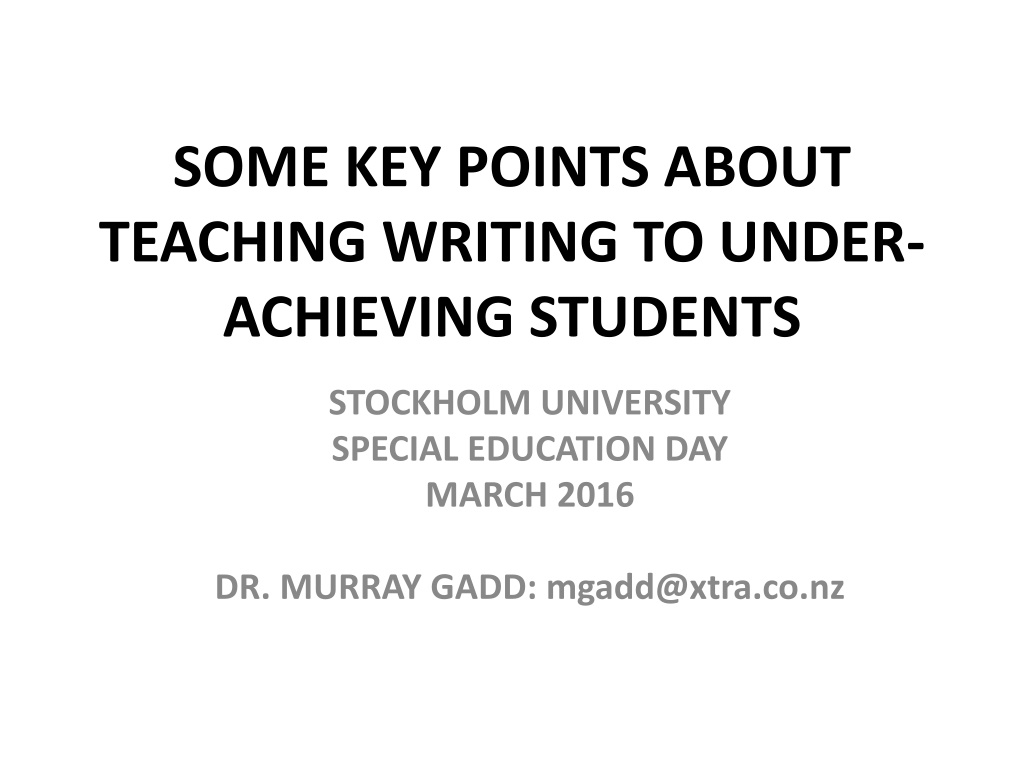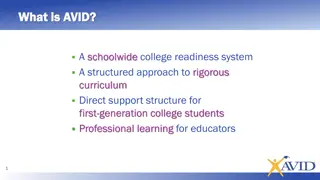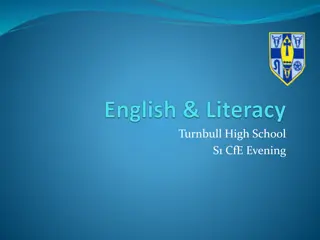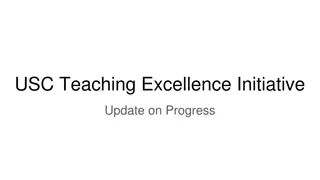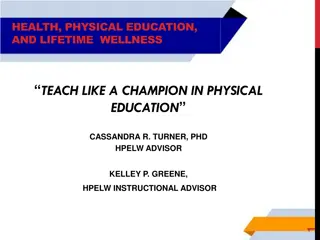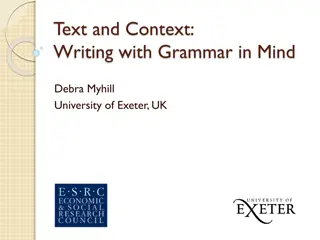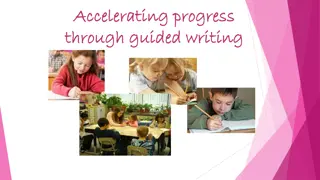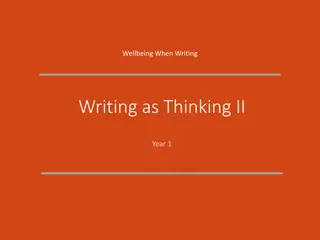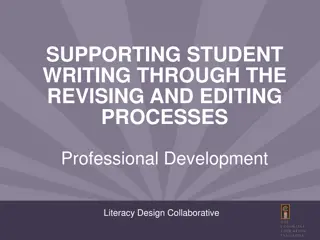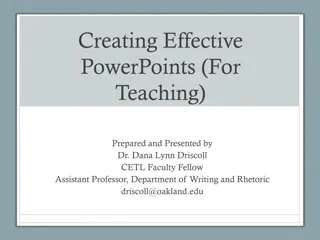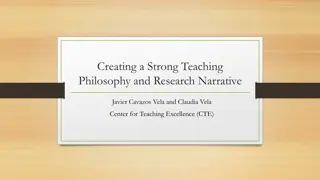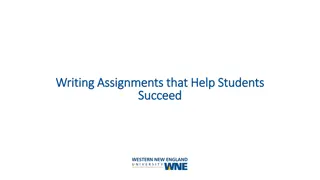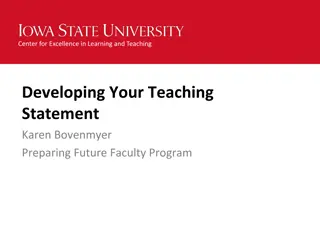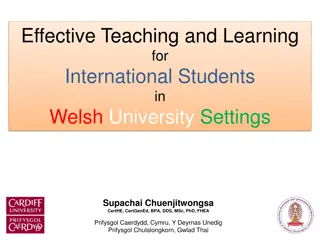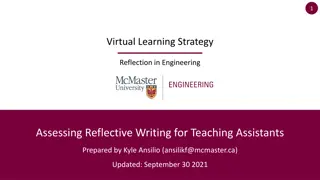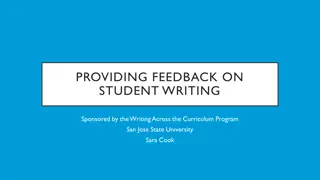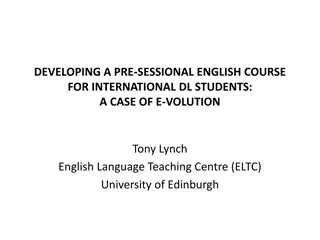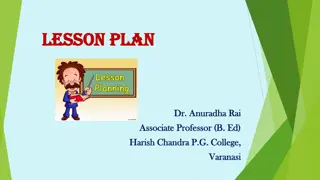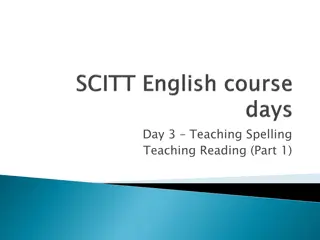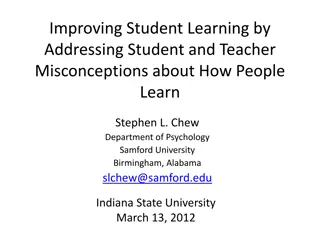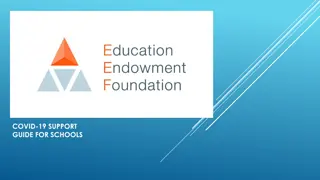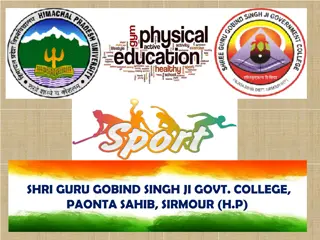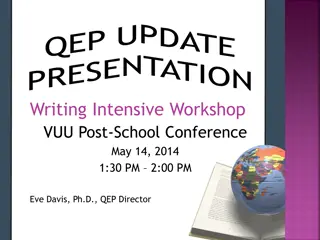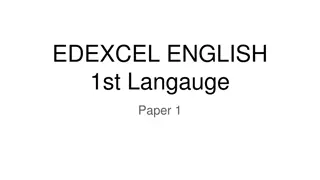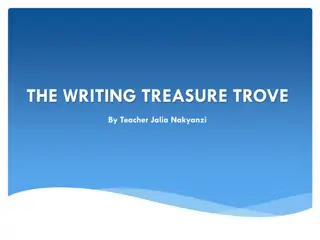Effective Strategies for Teaching Writing to Underachieving Students
Dr. Murray Gadd from Stockholm University discussed key points about teaching writing to underachieving students, focusing on gender and ethnicity differences in achievement in New Zealand. The research highlighted effective pedagogy for all learners, especially beneficial for underachieving students and boys. The study examined critical aspects in teaching writing for students in grades 5-8, involving observations of exemplary teachers, student interviews, and data analysis to identify effective teaching practices.
- Teaching Strategies
- Writing Instruction
- Underachieving Students
- Gender Differences
- Ethnicity Disparities
Download Presentation

Please find below an Image/Link to download the presentation.
The content on the website is provided AS IS for your information and personal use only. It may not be sold, licensed, or shared on other websites without obtaining consent from the author. Download presentation by click this link. If you encounter any issues during the download, it is possible that the publisher has removed the file from their server.
E N D
Presentation Transcript
SOME KEY POINTS ABOUT TEACHING WRITING TO UNDER- ACHIEVING STUDENTS STOCKHOLM UNIVERSITY SPECIAL EDUCATION DAY MARCH 2016 DR. MURRAY GADD: mgadd@xtra.co.nz
WITHIN NEW ZEALAND, WHO ARE OUR UNDER-ACHIEVING STUDENTS IN WRITING? - Upper primary school students and lower secondary school students (10-15 year olds). - Boys. - Students from minority ethnic groups (Maori and Pasifika). - Students who do not have English as their mother tongue (mainly from Asia). IS THIS THE SAME IN SWEDEN?
NEW ZEALAND: GENDER DIFFERENCE IN ACHIEVEMENT 2014 79.2% of grade 1-8 girls achieved at or above the national standard for writing. 63.5% of grade 1-8 boys achieved at or above the national standard for writing. This indicates a difference of 15.7%. NEW ZEALAND: ETHNICITY DIFFERENCE IN ACHIEVEMENT 2014 76.8% of grade 1-8 NZ European students achieved at or above the national standard for writing. 61.2% of grade 1-8 Maori students achieved at or above the national standard for writing. 59.6% of grade 1-8 Pasifika students achieved at or above the national standard for writing. This indicates an average difference of 16.4%.
SO WHAT SHOULD WE BE DOING ABOUT THIS?
AN IMPORTANT STARTING POINT When quantitative and qualitative data for all students was aggregated and analysed, it became evident that what was suggested as effective pedagogy for all learners was particularly effective pedagogy for under- achieving students and especially for boys. (Gadd, PhD research, 2014).
THE RESEARCH QUESTION I ASKED MYSELF: What is critical in the effective teaching of year 5-8 writing?
HOW DID I UNDERTAKE THE RESEARCH? - By selecting 12 exemplary teachers of writing. - By observing each of them teaching writing on three occasions. - By interviewing them on several occasions about their teaching of writing. - By interviewing some of their students about their writing. - By ascertaining the actual effectiveness of each teacher from the above data. - By collecting student achievement data in writing from each class over three time periods. - By seeking points of association between aspects of teacher practice and positive outcomes for students: What makes the difference?
EFFECTIVE TEACHER PRACTICE WAS EXPLORED THROUGH THE LENS OF: - - - - - - - - Expectations. Learning goals. Learning tasks. Direct instruction. Responding to students. Engagement and challenge. Organisation and management. Self-regulation. So which of these 8 dimensions of effective practice had the strongest association with teachers capacity to: - generate learner gains? (2) - decrease the achievement gap in the classroom? (3)
Generating learner gains was most closely associated with high teacher proficiency at: - Learning tasks - Direct instruction
SOME PARTICULAR FINDINGS ABOUT LEARNING TASKS Learning tasks were particularly effective when: - Students regarded them as purposeful and meaningful. - Teachers involved students in the construction of the learning task.
SOME PARTICULAR FINDINGS ABOUT DIRECT INSTRUCTION Direct instruction was particularly effective when teachers showed that they could: - Demonstrate and/or explain clearly what students are to do, learn and achieve in a lesson. There was a difference between active demonstrating (writing with students) and receptive demonstrating (sharing others writing with students). - Question students deeply about their writing during all stages of the writing process. This meant asking mainly high cognitive questions ( how? and why? questions).
Decreasing the achievement gap was most closely associated with high teacher proficiency at: - Self-regulation - Responding to students - Organisation and management
SOME PARTICULAR FINDINGS ABOUT SELF-REGULATION It became apparent that teachers were particularly effective when they: - Gave time and opportunities for their students to write on self-selected topics. - Encouraged their students to write outside writing instructional time. - Provided opportunities for students to work collaboratively. - Encouraged their students to take responsibility for seeking support.
REMEMBER THE OVERALL FINDING? What is good for some is good for all. This particularly means focussing on aspects of learning tasks and direct instruction when undertaking writing instruction with all students, particularly under-achieving students.
THIS LEADS US TO ASKING SOME KEY QUESTIONS ABOUT UNDER- ACHIEVING STUDENTS AND WRITING:
QUESTION ONE ARE OUR STUDENTS WRITING ENOUGH? They must be writing independently for at least 20 minutes per day. This can be achieved through: - implementing specific opportunities for independent writing, eg. speed writing, sustained silent writing, diary writing, language experience writing - cutting down the instructional time (eg. teacher demonstrating) of writing lessons.
QUESTION TWO DO WE ENGAGE OUR STUDENTS THROUGH TOPICS THAT MOTIVATE AND EXCITE THEM? There is no topic that is going to excite and motivate every student. But research tells us that many underachieving students (especially boys) like to write: - imaginative narratives - recounts of events that are significant to them - reports and explanations of phenomena that are important to them - structured poetry
QUESTION THREE ARE WE GIVING THEM OTHER WRITING TASKS THAT MIGHT EXCITE THEM, ESPECIALLY IF THEY HAVE AN INTEREST IN TECHNOLOGY? For example: - creating story books for other students, especially younger students - caption writing for real life digital images - Power Point presentations of research topics with key points noted - writing and recording digitally rap songs, short scenes, jokes, jingles and advertisements - drama or role play that leads to writing.
QUESTION FOUR DO WE THINK ABOUT INSTRUCTIONAL STRATEGIES IN RELATION TO UNDER-ACHIEVING STUDENTS NEEDS? Research tells us that under-achieving students work best when: - there is an understood and accepted purpose and rationale for undertaking a task - they are involved in topic or task selection - they see a task demonstrated and explained. This includes active and receptive demonstrating. This includes how to put words and sentences together - the task is structured and they know exactly what they re expected to achieve and what achievement looks like - there are lots of opportunities for oral language and vocabulary building before writing - they get opportunities to work (and problem-solve) collaboratively - they get feedback that is positive and constructive THIS WILL MEAN WORKING WITH UNDER-ACHIEVING STUDENTS (BOYS?) IN SMALL GROUPS FROM TIME TO TIME.
QUESTION FIVE DO OUR UNDER-ACHIEVING STUDENTS HOLD HIGH EXPECTATIONS OF THEMSELVES AS WRITERS? This includes not getting put off writing because they perceive that: - it s all about quantity not quality - it s all about spelling, punctuation and handwriting - it s all about planning, revising and editing.
